What a Difference a School Can Make
Seemingly simple design decisions can have the short-term impact of making a school building more or less comfortable. When that environment influences whether or not students complete their education, however, the shape of a roof can affect the future of a country.
Cover photo: Blackboards at the ends of the buildings provide children the opportunity to finish schoolwork in daylight hours before returning home. The blackboards are also used at lunchtime and by local children at weekends. (Photo: Grant Smith)
The land-locked country of Burkina Faso in West Africa has one of the harshest climates and lowest literacy rates in the world. The latter is—in part—due to a massive shortage of school places and is exacerbated by the traditional concrete frame and block buildings that are the current standard school design. With no cement industry in the country, material for these structures has to be brought in from places like Togo or Benin, making the practice slow, expensive and unsustainable. Far worse, the flat metal roof design of the buildings turns the classrooms into ovens under the beating African sun where temperatures never go much lower than 25°C (77°F) in January and reach 40°C (104°F) or more in May.
‘Learning is very hard in that kind of oppressive heat,’ says Robin Cross, CEO and director of Article 25, a UK-based NGO that carries out construction work in vulnerable communities affected by natural disasters and poverty. ‘After midday these buildings are hotter inside than outside, which doesn’t make any sense. Buildings are supposed to protect people from the climate, not make the climate more aggressive.’
One of the charity’s most recent projects has sought to buck the prevalent local inclination for all-concrete school buildings. It’s a series of one-storey classroom and latrine buildings for Bethel Secondary School in Gourcy, 130 km (81 mi) northwest of the Burkinabe capital Ouagadougou, that Article 25 recently completed in collaboration with Giving Africa, a UK charity, and AEAD (Association Evangélique d’Appui au Développement, the Evangelical Association for Support and Development), a local NGO that builds, maintains and runs several schools in the north of Burkina Faso, including Bethel.
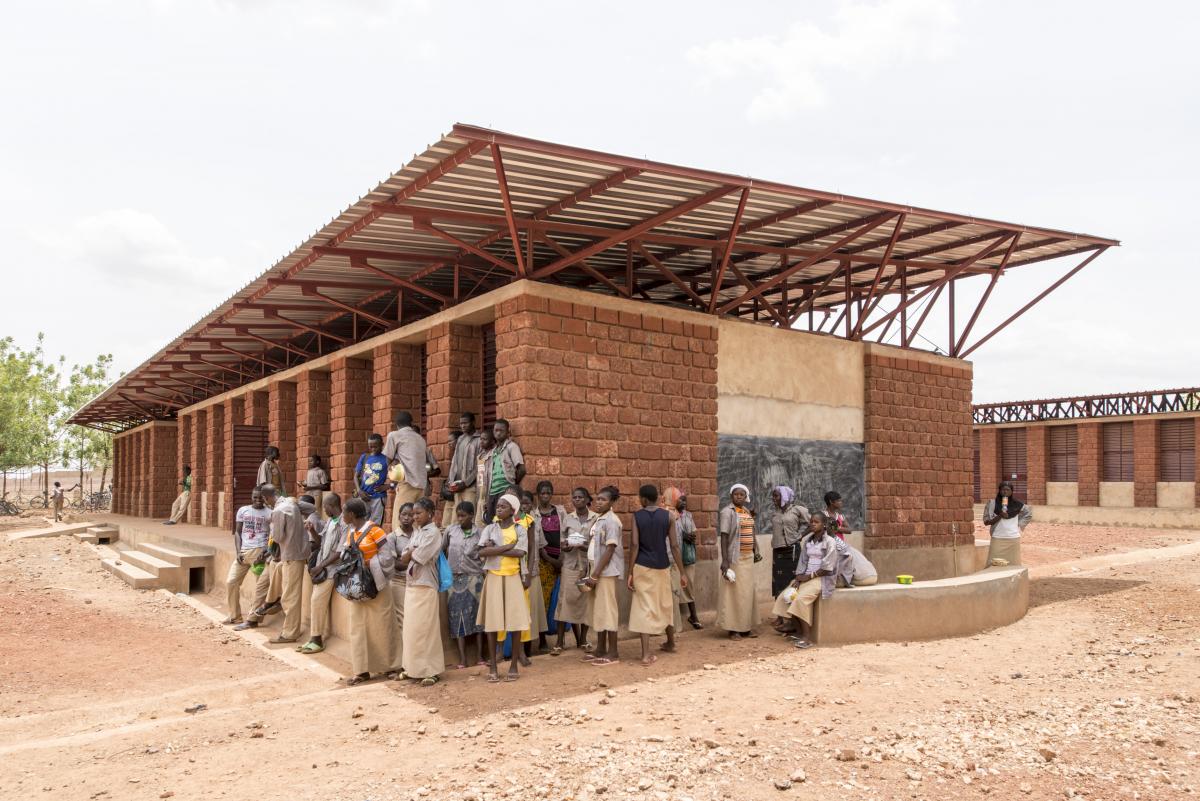
Students wait for their lunch, provided by AEAD, in the shade provided by the projecting eaves on the raised steel roof. The raised metal roof allows for venting, keeping the classroom cool. The external temperature is typically about 40°C. (Photo: Grant Smith)
Built predominantly out of a laterite stone quarried 2 km (1.2 mi) away, the elegant new buildings’ most distinctive feature is the geometric network of steel beams that lift the corrugated steel roofs 1 m (3 ft) above the classrooms, creating a welcome pool of shade. ‘By raising the roof you vent the underside of the metal, the heat is swept away, and the classrooms stay cool,’ explains Cross.
The windows on both sides of the classrooms provide cross-ventilation and have metal louvres that can be opened for light or closed to prevent sand coming in from the hot and dry harmattan winds. ‘There was no point putting glass in these windows; they would have just been a maintenance hazard and cost,’ Cross explains. Individual buildings are also oriented so that they receive the least solar radiation, presenting the shortest walls to the sun as it rises and descends.
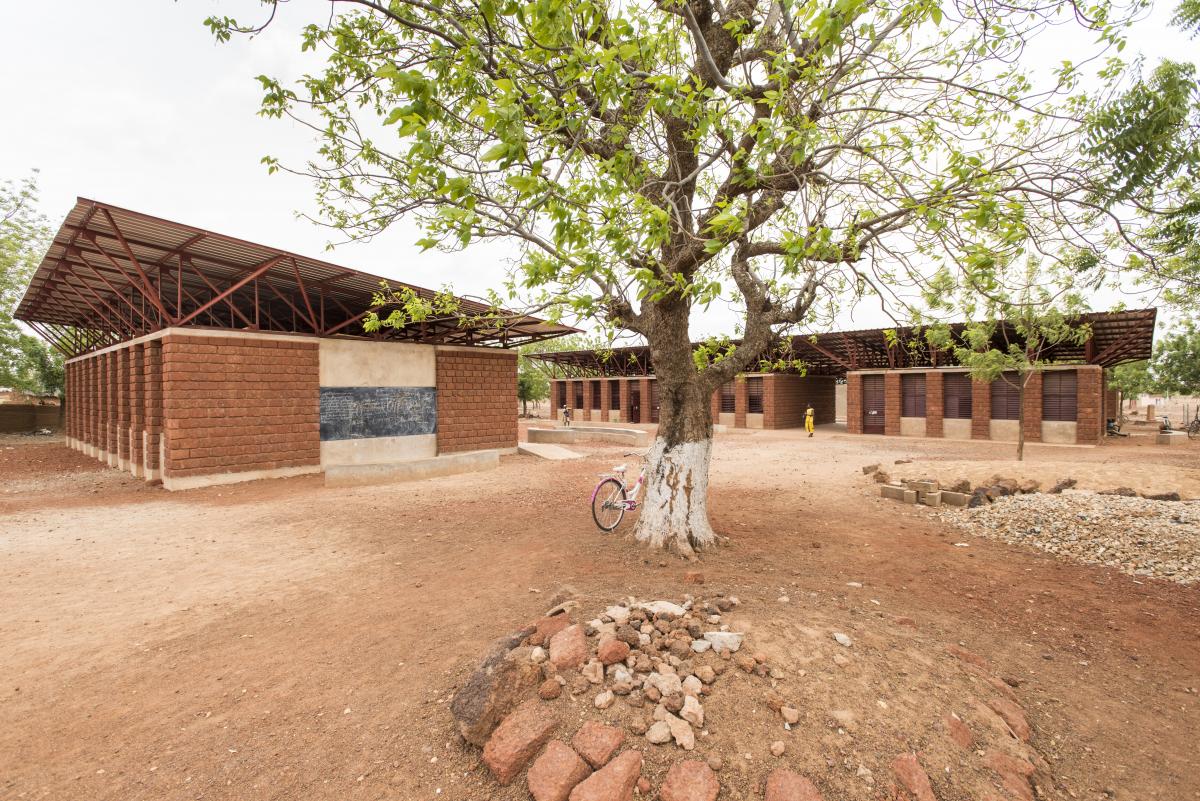
The few trees on the campus provide minimal shade. The breezeway is visible in the larger building, as are the blackboards at the ends of the buildings. The buildings are oriented so that the longer sides receive the least sun. (Photo: Grant Smith)
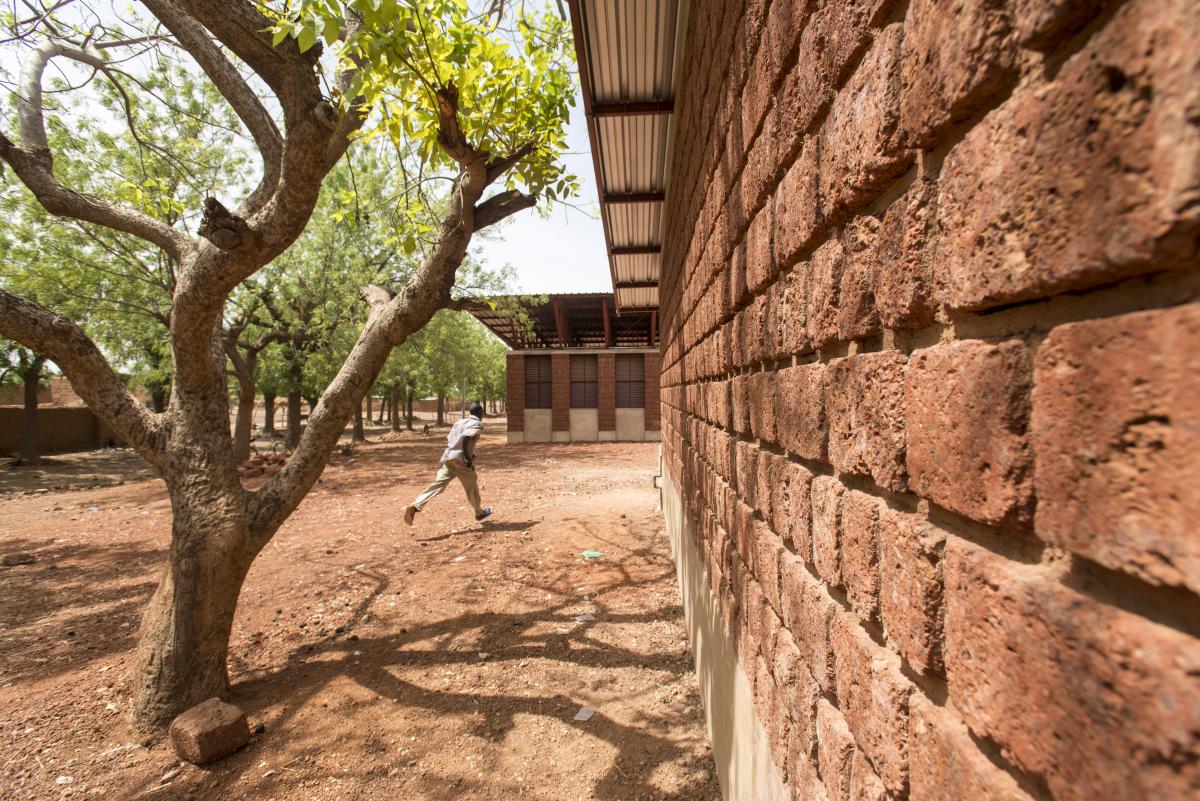
The effects of these simple ideas are far-reaching. ‘When I walk into the new buildings in Bethel I don’t feel the heat at all,’ says pastor Philippe Ouedraogo, founder (with his wife) of AEAD. ‘And consider that Bethel School is in the northern part of Burkina Faso where it is hotter than in the south, and there are fewer trees and even less rainfall.’
London-based architectural photographer Grant Smith was also impressed. He travelled to the school to photograph the new buildings and recalls the contrast with the tin-roofed two-storey concrete building in which the older classrooms are located. ‘It was stifling, there was no air movement and the classrooms gained heat all day,’ he says. ‘It was exhausting just climbing the stairs.’ The new classroom buildings are all on one level, so moving in and out of them is easy and the connection to the environment outside is immediate. ‘It was a relief to stand inside the classrooms after the oppressive heat outside.’
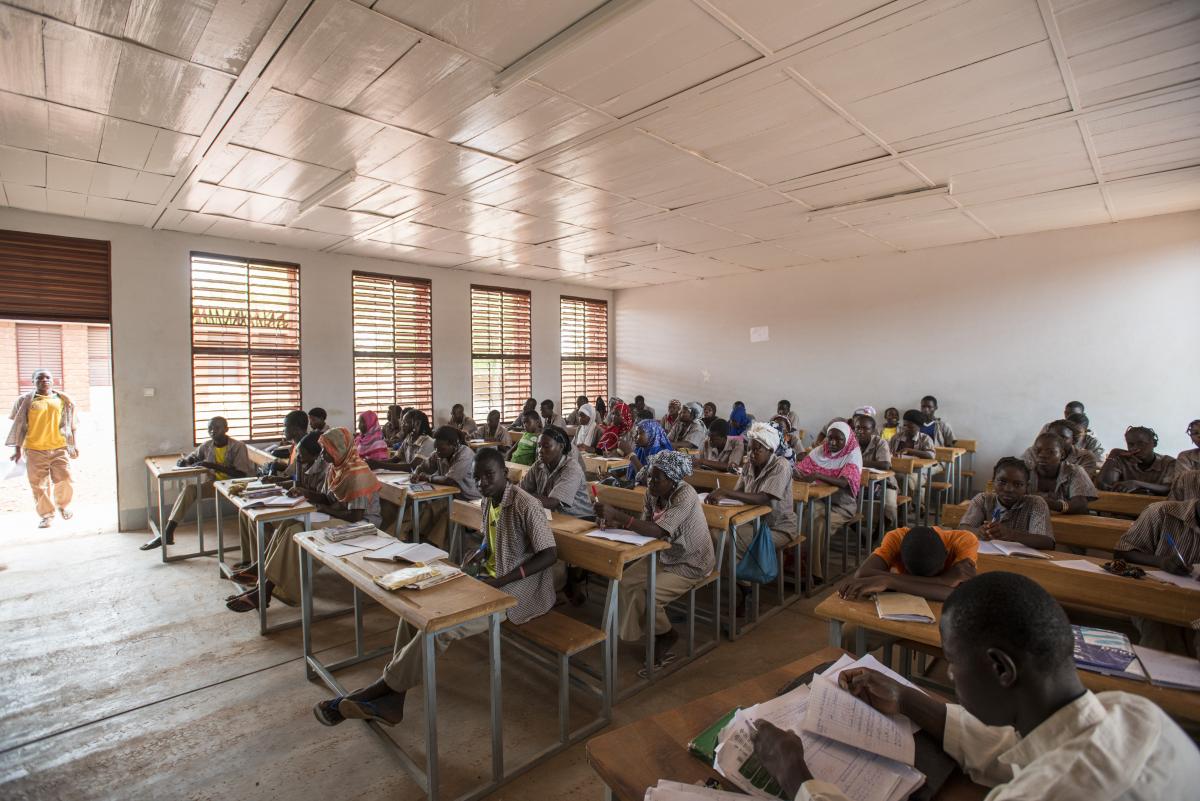
Inside the classrooms, light can be regulated with the metal louvres. The louvres also keep out the dust carried by the harmattan winds. In addition, the windows provide much better light than standard concrete-frame classrooms. The rooms are cooler and class sizes are smaller.  (Photo: Grant Smith)
Also noteworthy was the project’s use of traditional laterite stone and local building labour and knowledge, both factors that offer far wider developmental benefits on the ground than a concrete building. ‘It means most of the money raised in the UK by Giving Africa and Article 25 was actually spent in Burkina Faso,’ says Ouedraogo. According to Cross, laterite stone has been used for generations in the area, but mainly for agricultural buildings and other highly utilitarian constructions. ‘Our job was to take this material, which is used for cowsheds and grain storage, and turn it into something that actually looks good and makes people want to go to school,’ he says.
Students and teachers have responded with enthusiasm, using the classrooms at all hours, during lunch breaks and on evenings and at weekends too. As there is no electricity in neighbouring villages, and students often don’t have paper or pens at home, it is hard for them to study elsewhere. Azeta Ouedraogo, one of the female students at the school, likes the fact that the new classrooms are more spacious. ‘We are not so many inside,’ she says. She also likes the new latrines, declaring them ‘far cleaner’ than the previous ones.
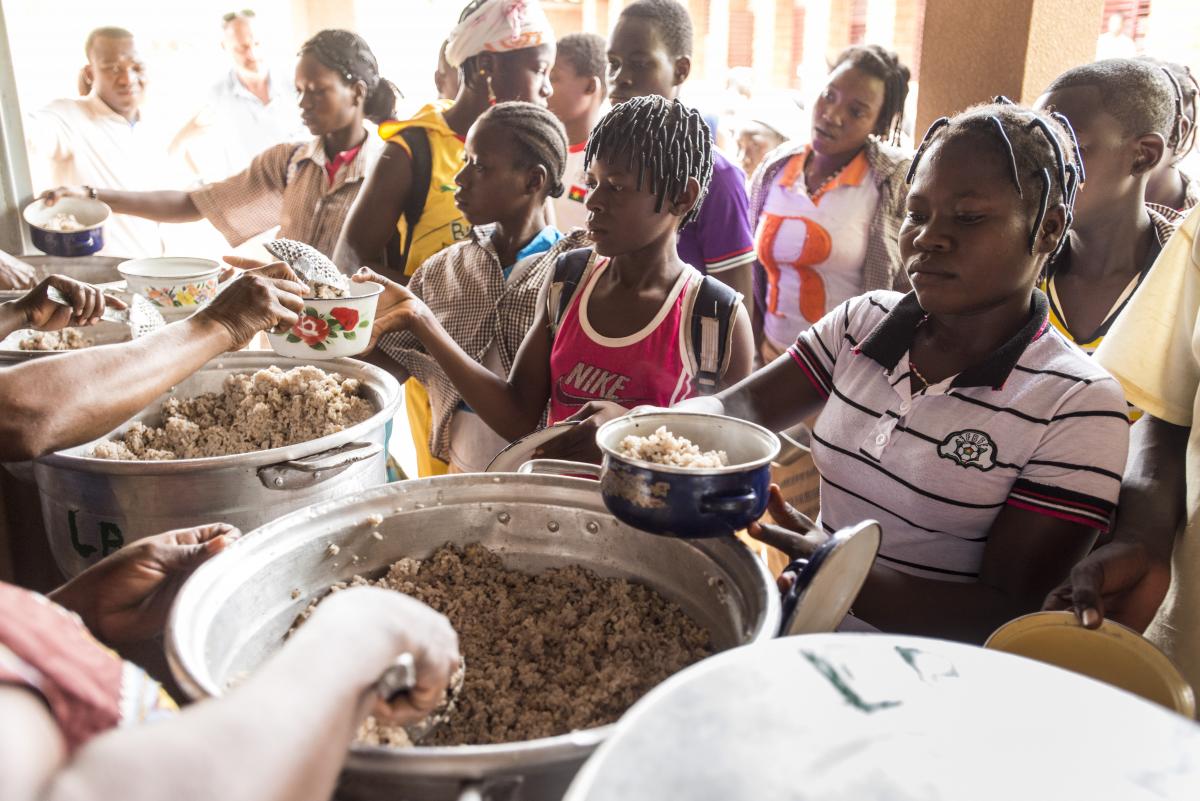
Azeta touches on two essential points. Before the new classrooms were built average occupancy at Bethel School was 100 students per classroom. According to Cross, the current average of 40 or 50 is still too high, but far better. ‘When you have that many students in a classroom the teacher can’t make his or her way to the back of the class,’ he says, ‘so the standard of education goes down and only the people at the front are interacting with the teacher.’
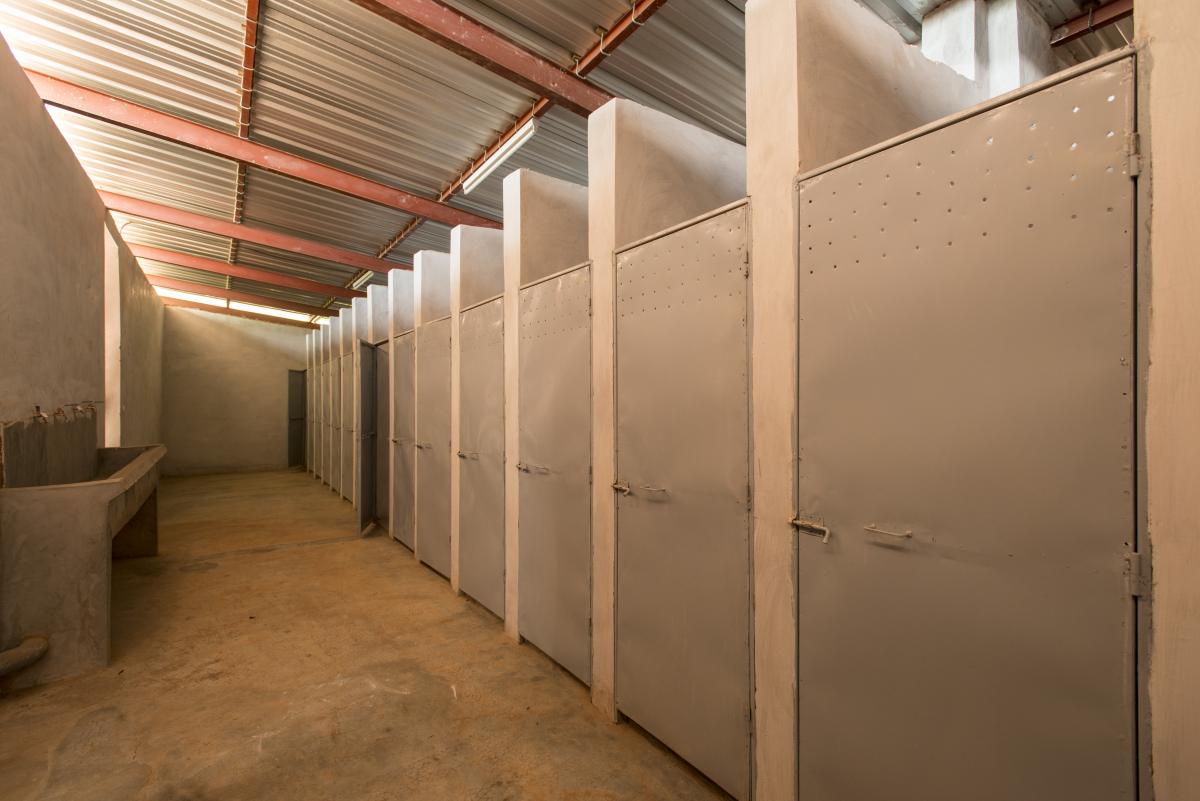
A separate latrine block offers privacy, individual cubicles and separate sections for boys and girls . Providing good sanitation facilities is vital in ensuring that girls remain in secondary education. (Photo: Grant Smith)
More importantly, the project included the building of a latrine block with separate boys’ and girls’ sections, wash basins and 28 individual cubicles. These offer privacy and are a big factor in children staying in education after puberty. ‘Inadequate sanitation facilities deter children from going to school,’ says Cross. ‘They don’t want to go to school to use a dirty toilet, and who would?’ Girls in particular don’t go to school after puberty if the sanitation is poor, a factor that disproportionately affects the standards of girls’ education.
You seem to enjoy a good story
Sign up to our infrequent mailing to get more stories directly to your mailbox.This open-minded and inclusive teaching approach is championed by Ouedraogo across all of AEAD’s schools. ‘Education in the public school system is about reciting and memorising things and repeating what the teacher tells you,’ he says. ‘That’s the way to get a good mark and get your certificate.’ Cross adds, ‘After eight years of school children are very good at writing down what’s on the board but they can’t look out of the window and describe the view, develop a business plan or write an essay.’
Ouedraogo promotes a different approach that aims at helping young people to acquire skills that they can use. ‘We want to teach people for life, we want people to use their skills and get out into the market and make money,’ he says. And this applies to women as much as to men. ‘By the time young women leave Bethel School they should be able to start their own business or have a job.’
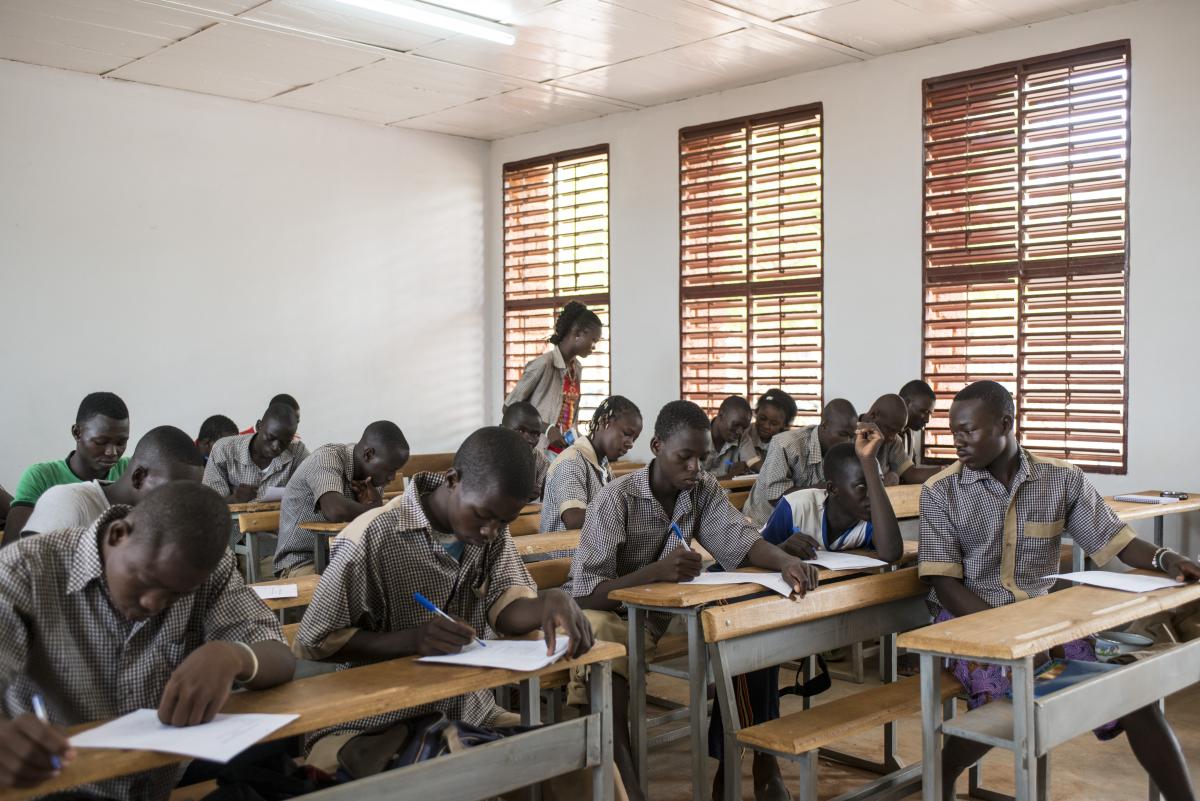
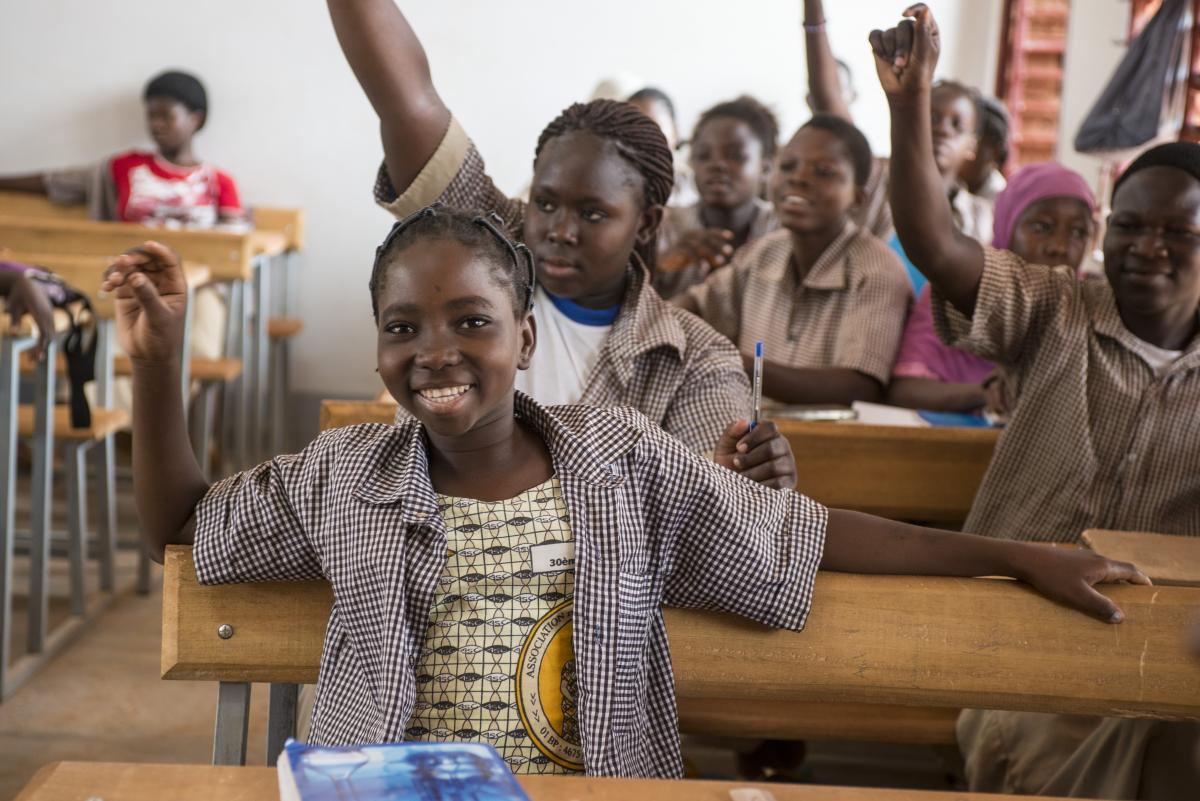
Students enjoy the new classrooms, and learning at Bethel School encourages personal initiative and independent thinking rather than rote learning. (Photo: Grant Smith)
So will more schools be built using these simple but effective techniques? Both Cross and Ouedraogo hope so but the expense may be an issue. The cost of building three big classroom blocks (with a total of eight classrooms) and a latrine block was £150,000 (€206,760 or US$235,400). That may not sound like much but it’s much more expensive than it would be in an industrialised country where cheap, locally manufactured products are available. ‘You could build the same buildings for half that amount in South Africa,’ says Cross, who is working with his team on ways to roll out this building type more cost effectively. But as local architect Kodzo Adali-Mortty points out, ‘The initial building costs may be higher but the running and maintenance costs are very low compared to other schools.’ Adali-Mortty, who oversaw the construction of the new classrooms, explains that traditional concrete-framed schools get cracks and leaks within months, plus the Bethel buildings are filled with natural light, so they require less artificial lighting.
Ouedraogo has a proven track record of building up schools from the ground, something the local government cannot do. ‘They haven’t got the resources or the connections to build a secondary school on their own,’ he explains. ‘The people governing are poor, there are few taxes coming in. That’s why they call on advocacy groups like mine to help them implement social policies in areas like education, health and even agriculture and food security.’ But the government does have land, in this case the 3.5 hectares (8.6 acres) that it gave to Ouedraogo to build Bethel School. And the fact that AEAD is a Christian NGO running a school in a largely Muslim area is irrelevant says Ouedraogo. ‘We have an open religious approach in the school and in Burkina Faso. People are not forced into anything.’
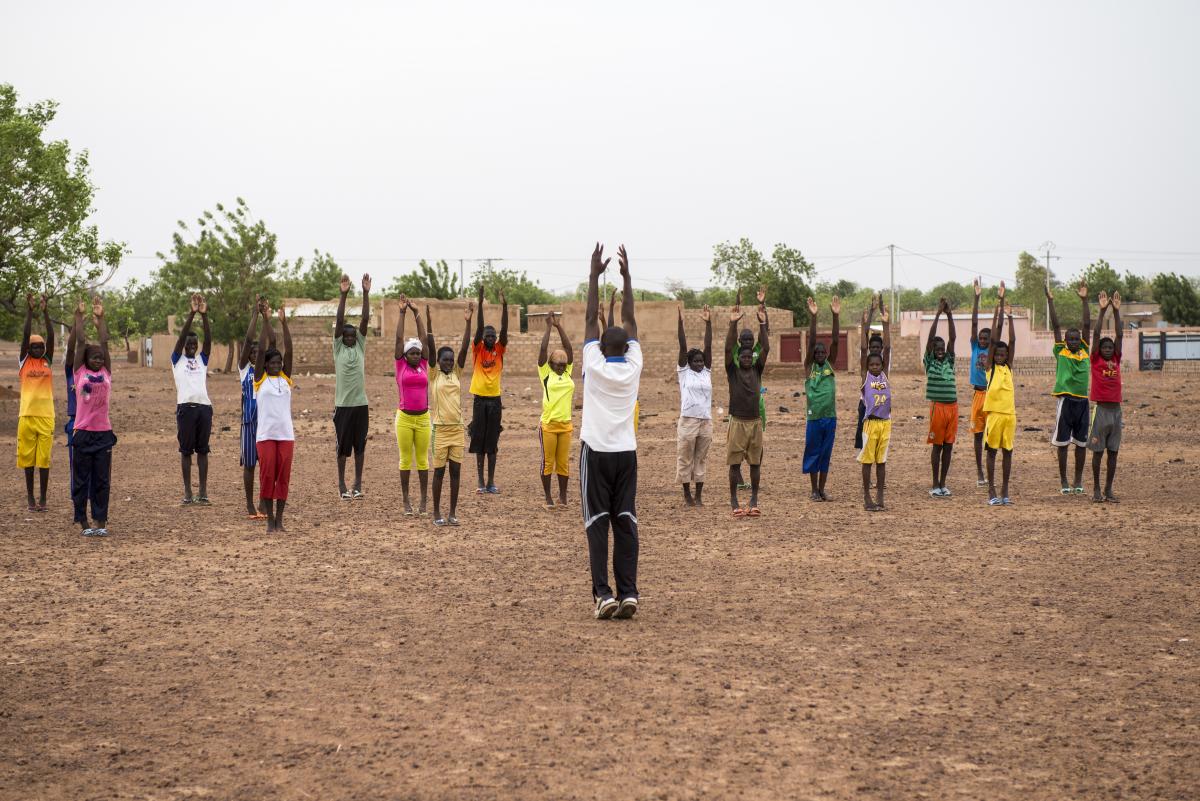
Ouedraogo plans to use the new buildings at night to house a technical and vocational school for further education. And over time, with the help of Article 25 and other NGO partners, AEAD plans to equip the school with further study spaces, a library, a security building, sports facilities and, last but not least, bicycle shelters. The latter are vital to improving the chances of children and young people, especially girls, getting an education. ‘A lot of these children come from a long way away and need to cycle to school,’ explains Cross. ‘If they leave their bike in the sun during the day the sun destroys the rubber of the tyres so they get punctures on the way home. For girls especially it’s unsafe to be walking home at night.’
Sometimes it’s the simplest measures that are the most far-reaching. This is true for these new classrooms where an enlightened choice of materials and straightforward passive architectural systems have the power to change the lives and educational prospects of hundreds of boys and girls in an impoverished land.

